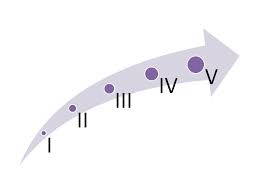Key psychotherapeutic theries
I am interested in various models and frameworks on forms of relationship essential to the development of a positive therapeutic experience between therapist and client along with the whole interplay of explicit and implicit communication.
This article focuses on a few key frameworks and models of approach that I came across in foundation psychotherapy training and think best illustrate various approaches.
Rogers 6 conditions:
 I’m starting with Carl Rogers principles that there are six necessary and sufficient conditions required for therapeutic change, originally developed around the late 1950s. This is perhaps because when I first became interested in psychotherapy and counselling many years ago in foundation training, the phrase “unconditional positive regard” has always stayed with me: the idea of the therapist being there for the client beyond providing a blank screen felt true.
I’m starting with Carl Rogers principles that there are six necessary and sufficient conditions required for therapeutic change, originally developed around the late 1950s. This is perhaps because when I first became interested in psychotherapy and counselling many years ago in foundation training, the phrase “unconditional positive regard” has always stayed with me: the idea of the therapist being there for the client beyond providing a blank screen felt true.
These 6 conditions are:
- Therapist–client psychological contact: a relationship between client and therapist must exist, and it must be a relationship in which each person’s perception of the other is important
- Client incongruence: that incongruence exists between the client’s experience and awareness
- Therapist congruence, or genuineness: the therapist is congruent within the therapeutic relationship. The therapist is deeply involved him or herself — they are not “acting”—and they can draw on their own experiences (self-disclosure) to facilitate the relationship
- Therapist unconditional positive regard: the therapist accepts the client unconditionally, without judgment, disapproval or approval. This facilitates increased self-regard in the client, as they can begin to become aware of experiences in which their view of self-worth was distorted by others
- Therapist empathic understanding: the therapist experiences an empathic understanding of the client’s internal frame of reference. Accurate empathy on the part of the therapist helps the client believe the therapist’s unconditional love for them.
- Client perception: that the client perceives, to at least a minimal degree, the therapist’s positive regard and empathic understanding.
Three of these conditions have become known as the ‘Core Conditions’ 3, 4 and 5 (above).
My personal experience would be not as literal as all these 6 conditions spell out taken as an entirety; as Keith Tudor and Mike Worrall point out, it is important to reflect that many individuals with problems cope with them or indeed move to resolve them in a number of ways, which don’t necessitate being in therapy (there is some evidence that Rogers may have moved away from these pre-conditions in later life). Personal growth and psychological comfort rely at least to some extent on the client self healing. I do though have a sense of resonance with what are referred to as the core conditions: those of therapist congruence, unconditional positive regard and empathetic understanding. Having watched the 3 approaches to psychotherapy film in which Rogers, Perls and Ellis work with the same client Gloria , I am struck by the empathy and congruence that Rogers shows in working with Gloria helping her understand that it is the battle within her own internal psyche about her values and what constitutes good and bad that is significant, as much as the anxiety she has about her relationship with her daughter.
My own perspective is that it is important as a therapist is to have some underlying principles, but to hold them lightly; as Jung said: “learn your theories as well as you can, but put them aside when you touch the miracle of the living soul”. Overall, there are really useful principles of therapeutic practice within Rogers approach that speak to me in my growing and deepening work with clients in psychological coaching
Clarkson 5 relationship Model
 I have become interested in Petruska Clarkson due to her body of work on human relationships, including the 5 relationship model. When I look at the five aspects of a therapeutic relationship I feel a strong degree of resonance with these principles, and will focus on a couple of particular ones, the working alliance and the reparative/development need aspects. I like the metaphor Clarkson uses in relation to a piano, that some aspects are played more frequently or loudly than others, but they are always potentially there.
I have become interested in Petruska Clarkson due to her body of work on human relationships, including the 5 relationship model. When I look at the five aspects of a therapeutic relationship I feel a strong degree of resonance with these principles, and will focus on a couple of particular ones, the working alliance and the reparative/development need aspects. I like the metaphor Clarkson uses in relation to a piano, that some aspects are played more frequently or loudly than others, but they are always potentially there.
(1) The working alliance:
This is the basis of the client–therapist relationship that enables both the client and the therapist to work together and would include such things as the contract, the presenting issues and maybe a realisation of both parties that in other circumstances they may not choose to be in each other’s company.
This first stage is very much about building a shared understanding and a foundation, so if the relationship falters, both parties can return to the contract and try to repair the therapeutic alliance.. this is known as a reparative phase.
As I understand it the working alliance is the basis of the client–therapist relationship that enables both the client and the therapist to work together and would include such things as the contract, the presenting issues and maybe a realisation of both people that in other circumstances they may not be kindred spirits, or even necessarily like each other. There are some synergies here with Coaching practice with a contracting process, and examination of presenting versus underlying issues; it leads to my sense that Coaching has beg, stole and borrowed from therapeutic theory!
(2) The transferential/ countertransferential relationship:
Most of us have at some time or another met a person for the first time and found ourselves either strongly attracted or repelled by them.
This strong feeling is sometimes rooted in ‘the presenting past ‘also known as ‘transference’ the idea that the client reminds us of someone from our past and as such we ‘transfer’ those feelings from the past on to the client.
Therapists need to be vigilant of this, if they feel irritated by a client they need to explore in supervision where this comes from, as there is a possibility that reacting to the client as they would a person from their past , this is known as ‘counter transference’, it is unfair and possibly emotionally damaging for the client .
(3) The reparative/ developmentally needed relationship:
Many clients come to see therapists as the ‘good enough other’ the idea that at some level they emotionally take on the therapist as a ‘parent figure’ to support them during the personal growth that hopefully takes place during therapy, Clarkson described this as ;
“The developmentally needed or reparative relationship is an intentional provision by the psychotherapist of a corrective, reparative, or replenishing relationship or action where the original parenting was deficient, abusive or overprotective”.
Given time the client begins to trust their own judgment and the need to use the therapist as an emotional support lessens, at this point therapy usually comes to an end.
(4) The person-to-person relationship:
Counselling and psychotherapy relies to a great extent on building a human connection with clients, where a deep level of trust is established, this transcends any modality, this is seen to a great extent in the work of Carl Rogers.
Rogers describes the core conditions of empathy, congruence and unconditional positive regard, as the foundations of building an interpersonal alliance between two people. In terms of “The 5 relationship model’ the therapist would use these conditions to facilitate the ongoing encounter with the client.
The person-to-person relationship is the core or real emotional connection – as opposed to a professional relationship with say your doctor or dentist.
Research by Affleck has shown that it is significant to the client that there be a real relationship from within which environment the therapists can use whatever modality of therapy she or he is trained in.
(5) The transpersonal relationship
This is harder to define in absolute terms; it can include an expansion of consciousness, which can be spiritual or healing.
Perhaps one way of describing it is the feeling you have after going to a concert you enjoyed or a really special evening with friends. A feeling of spiritual connection which was described by Clarkson herself as;
“The transpersonal relationship is the timeless facet of the psychotherapeutic relationship, which is impossible to describe, but refers to the spiritual dimension of the healing relationship”.
Whilst I am careful in my Coaching practice about maintaining boundaries between coaching principles and deeper therapeutic approaches and in some cases referring clients on where we both feel it appropriate, the emerging interest in therapy over the last few years has taken me in working with clients into a more psychological way using approaches like the autobiography exercise, which encourages clients to reflect on how they have become the people they are before starting to look at how the future might unfold. Asking someone starting work in Coaching to take you through their background is an important part of an initial session. It establishes rapport and interest in the whole person, not just the work person. The “whole” person has evolved from life experience, so for both the client and the Coach, telling and hearing the life story is one way to begin to understand the client’s world. This approach has certainly helped me understand in one of my clients some of the script messages from formative years that have been internalised, along with working on re-framing these messages.
Murphy and Gilbert 5 stages
 My sense of the two perspectives of Rogers and Clarkson is that they are useful underlying principles to the work of therapy, focusing on the interpersonal aspects of the relationship between the therapist and client. Another interesting approach is that of Katherine Murphy and Maria Gilbert, describing some of their underlying principles, whilst alongside the principles setting out a 5 stage model of therapy (Murphy and Gilbert 2000).
My sense of the two perspectives of Rogers and Clarkson is that they are useful underlying principles to the work of therapy, focusing on the interpersonal aspects of the relationship between the therapist and client. Another interesting approach is that of Katherine Murphy and Maria Gilbert, describing some of their underlying principles, whilst alongside the principles setting out a 5 stage model of therapy (Murphy and Gilbert 2000).
One of their underlying aspects of people being relationship seeking and the idea of people having internalised relationship patterns is an interesting one. They bring into play the theories of Stern in child development in how a child creates a sense of repeated similar experiences with primary carers and how this builds a set of self beliefs and behaviours built on this; what they call the core interpersonal scheme. It also brings to mind Transactional Analysis theory on life scripts and “drivers”. They do point out clearly that whilst it is stated sequentially, that these stages often are re-cycled and overlap. In my experience in other work around behaviour change such as the transtheoretical model, this is true of robust, flexible models; they contain a sense of start, middle and end, but have circumnavigated ways through.
Murphy and Gilbert set out various stages that move through:
- Whether it’s possible to work together, the first meeting and assessment
- Building trust through the working alliance
- Moving through a process of exploration and change
- Experimenting with new choices and approaches
- Finally saying goodbye.
The interplay of explicit and implicit communication processes
 Thinking about verbal and non verbal communication takes me back to my first year at University in a Psychology Module examining the work of Michael Argyle initially in the 1960s. I know from my own work in adult learning the power of non verbal communication in being able to intuit what is happening with clients 1-1, and indeed working with groups of people. Most communication happens non verbally; about 90% is non verbal and only 10% is verbal (Mehrabian 1964).
Thinking about verbal and non verbal communication takes me back to my first year at University in a Psychology Module examining the work of Michael Argyle initially in the 1960s. I know from my own work in adult learning the power of non verbal communication in being able to intuit what is happening with clients 1-1, and indeed working with groups of people. Most communication happens non verbally; about 90% is non verbal and only 10% is verbal (Mehrabian 1964).
In the context of psychotherapy and indeed in all communication, explicit communication is conveyed in spoken language, and implicit communication in postures and movement, facial expressions like gazing and eye contact and personal mannerisms like playing with the hair or hands. It also includes the way individuals speak, how fast or slow, words and phrases they emphasise, the paralanguage approaches like the “ums” and “ahs”, and the sighs. Gill Westland identifies the different emphasis on explicit and implicit communication particularly looking at body psychotherapy and creative arts modes of psychotherapy through the metaphor of an “improvised dance”, where the therapist and the client influence one another inter subjectively through a jointly created and collaborative approach. ” Clinicians cannot afford to ignore the body-neither their patients nor their own-because the body often receives and transmits what has not of cannot be put into words”. I like this quote as it not only encompasses awareness of implicit communication, but also emphasises the need for the therapist to be aware of what is happening in their own bodies in response to a client.
 In modern attachment theory, Allan and Judith Schore reinforce the importance of noticing essential implicit communications embedded within the therapist-client relationship, and make the point that the implicit communications convey expressions of the personality of the therapist and set the tone for the content of the interaction in their reference to Scaer (Scaer 2005): “Tone and volume of voice, patterns and speed of verbal communication, and eye contact also contain elements of subliminal communication and contribute to the unconscious establishment of a safe, healing environment”
In modern attachment theory, Allan and Judith Schore reinforce the importance of noticing essential implicit communications embedded within the therapist-client relationship, and make the point that the implicit communications convey expressions of the personality of the therapist and set the tone for the content of the interaction in their reference to Scaer (Scaer 2005): “Tone and volume of voice, patterns and speed of verbal communication, and eye contact also contain elements of subliminal communication and contribute to the unconscious establishment of a safe, healing environment”
I am struck by the importance of secure attachment in early life and how people struggle to lose a poor sense of attachment entirely if it happens, and the way that psychotherapy work can re-create a “good enough” attachment. Patricia DeYoung talks about the wonderfully good part of relational therapy being “when your main concern as a therapist is to understand what your client means and how she feels, she starts to believe in her own perceptions and emotions. She begins to feel not so isolated, not so angry and sad, and she gains some genuine, respectful empathy for her own struggles.”. She talks about the client’s swings between hope and dread; hope that there is a promise of a nurturing and strong connection, and dread that it will all fall apart like it did in the early years; in some senses, a possible self fulfilling prophecy that something bad will happens to create disconnection.
I’m aware in my coaching practice of the implicit communication and the underlying messages in the work with clients, as much as what’s being said, and a deeper awareness of the importance of creating strong co-creation of options and ways forward through things like the power of silence to support a learning moment, and really watching a client and being in tune with them.